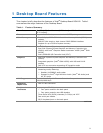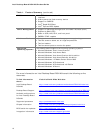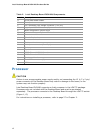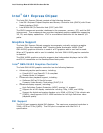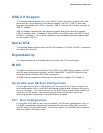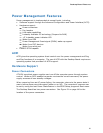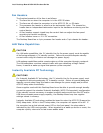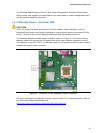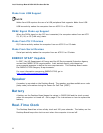Desktop Board Features
17
USB 2.0 Support
The Desktop Board supports up to eight USB 2.0 ports (four ports routed to the back
panel and four ports routed to two internal headers) via ICH7. USB 2.0 ports are
backward compatible with USB 1.1 devices. USB 1.1 devices will function normally at
USB 1.1 speeds.
USB 2.0 support requires both an operating system and drivers that fully support
USB 2.0 transfer rates. Disabling Hi-Speed USB in the BIOS reverts all USB 2.0 ports
to USB 1.1 operation. This may be required to accommodate operating systems that
do not support USB 2.0.
Serial ATA
The Desktop Board supports three Serial ATA channels (3.0 Gb/s) via ICH7, connecting
one device per channel.
Expandability
For system expansion, the Desktop Board includes one PCI bus connector.
BIOS
The BIOS provides the Power-On Self-Test (POST), the BIOS Setup program, the PCI
and IDE auto-configuration utilities, and the video BIOS. The BIOS is stored in the
Serial Peripheral Interface (SPI) Flash component.
The BIOS can be updated by following the instructions on page 53 in Chapter 3.
Serial ATA and IDE Auto Configuration
If you install a Serial ATA or IDE device (such as a hard drive) in your computer, the
auto-configuration utility in the BIOS automatically detects and configures the device
for your computer. You do not need to run the BIOS Setup program after installing a
Serial ATA or IDE device. You can override the auto-configuration options by
specifying manual configuration in the BIOS Setup program.
PCI* Auto Configuration
If you install a PCI add-in card in your computer, the PCI auto-configuration utility in
the BIOS automatically detects and configures the resources (IRQs, DMA channels,
and I/O space) for that add-in card. You do not need to run the BIOS Setup program
after you install a PCI add-in card.



